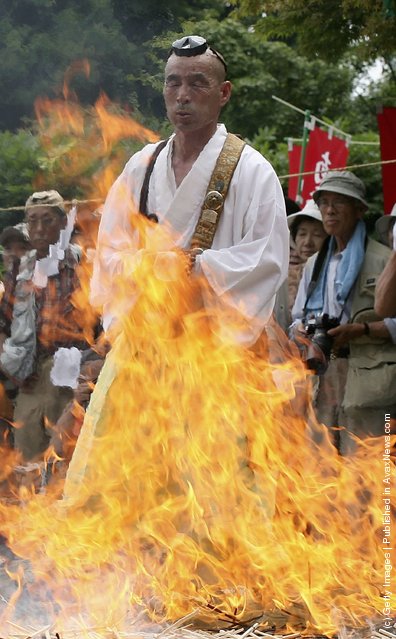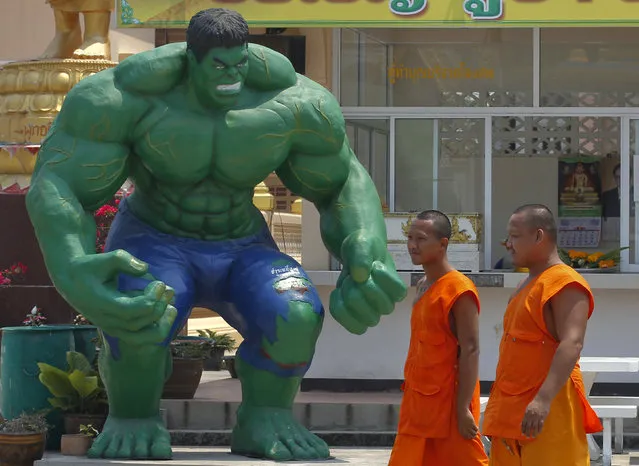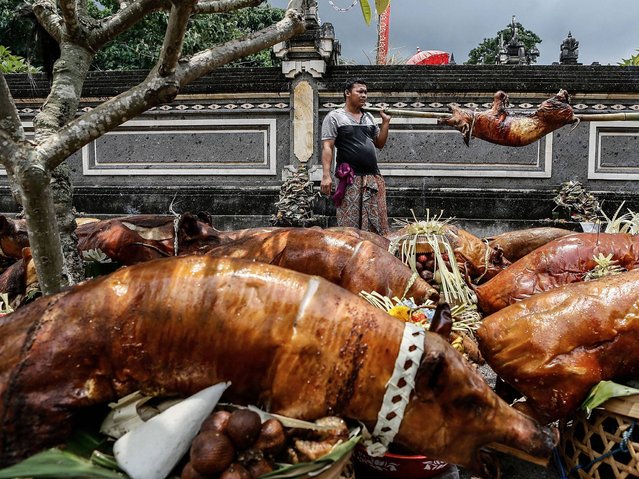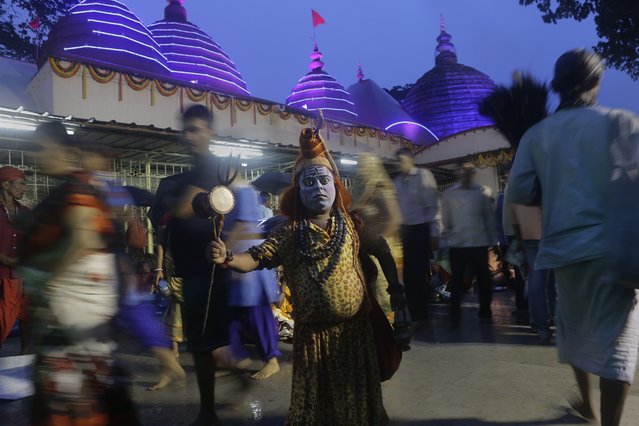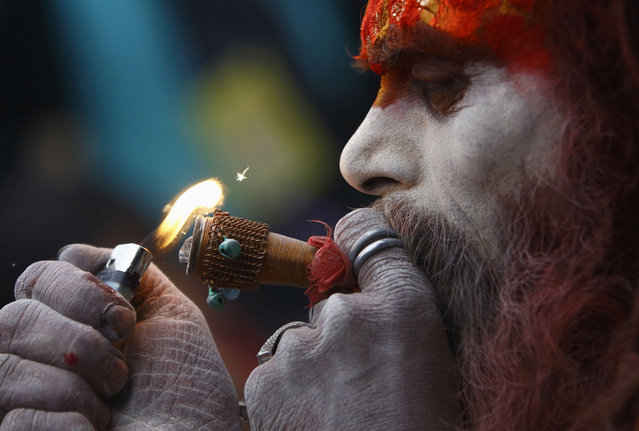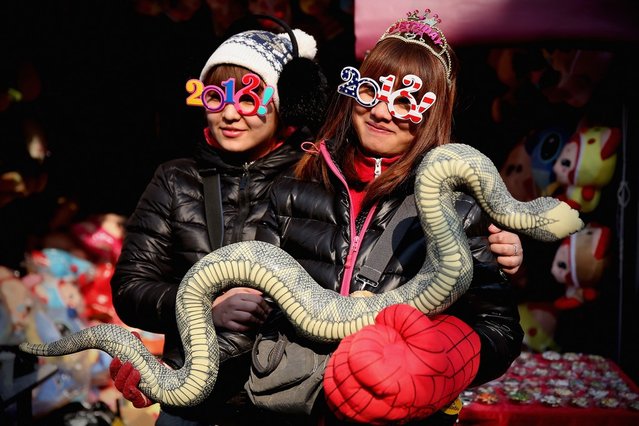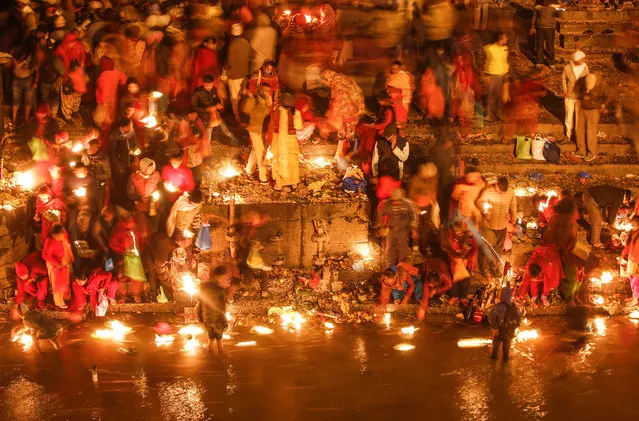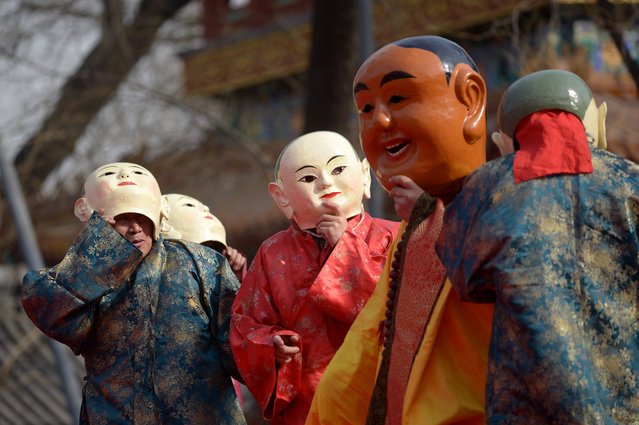
Tibetan monks dressed as demons attend the Beating Ghost festival at the Yonghe Temple, also known as the Lama Temple, in Beijing on March 19, 2015. The Beating Ghost festival, or Da Gui festival in Chinese, is an important ritual of Tibetan Buddhism and is believed to expel evil spirits and shake off troubles. (Photo by Wang Zhao/AFP Photo)
22 Mar 2015 11:45:00,post received
0 comments

